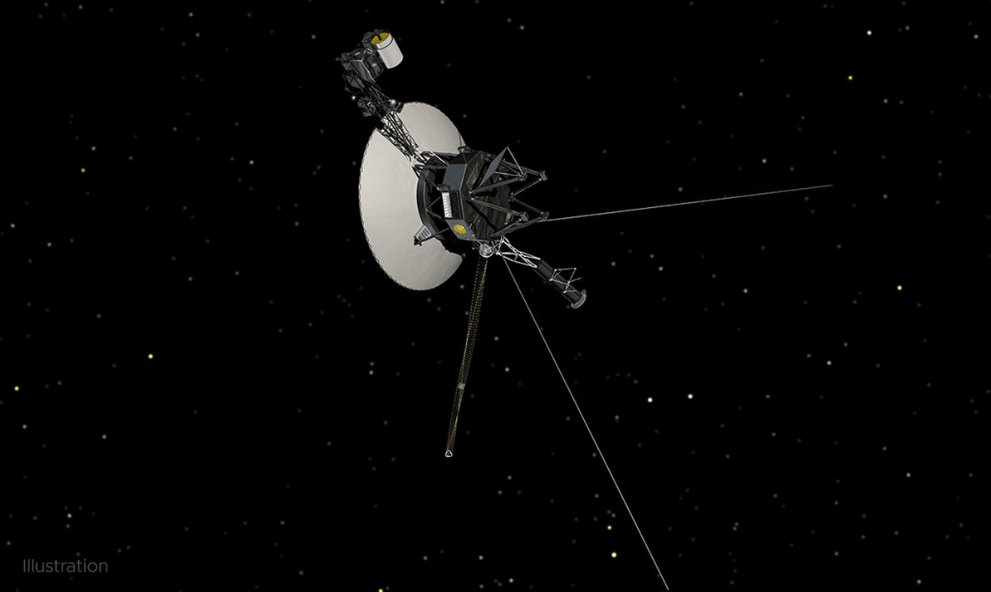Forty-five years after launch, NASA’s Voyager 1 spacecraft is still sending data to scientists on Earth, but a mysterious problem is spoiling the data.
NASA scientists In an attempt to make sense of the erroneous system data that the interstellar Voyager spacecraft is sending back to Earth from about 20 light-hours, 45 years after its launch.
Launched in September 1977, Voyager 1 is now the most distant spacecraft, traveling in space at a distance of approximately 14.5 billion miles (23.3 billion km). It would take the light about 20 hours to get from the probe to Earth.
NASA’s Jet Propulsion Laboratory is investigating a flaw in system data collected by the Interstellar Explorer. According to JPL, the probe’s AACS data “doesn’t reflect what’s actually happening on board.”
Everything about AACS indicates that it is operating normally, but the telemetry data it sends back to Earth is “invalid”, resulting in apparently randomly generated data out of proportion to the state the system might be in.
AACS controls the direction of Voyager 1 and keeps the highly sensitive antenna pointed toward the ground for optimal data transmission.
The spacecraft will be placed in a functionally limited “safe mode” if the onboard fail-protection systems are turned on. The signal is still strong, but the data appears to be flawed, according to NASA JPL.
NASA considers such anomalies to be normal for a spacecraft of this age.
“An enigma like this is perfectly normal at this point in the Voyager mission,” Susan Dodd, Voyager 1 and 2 project manager at NASA’s Jet Propulsion Laboratory in Southern California, said in a statement.
“The spacecraft is about 45 years old, which is far beyond what the mission planners expected. We are also in interstellar space – a highly radioactive environment where no spacecraft has flown before. So there are some big challenges for the engineering team. But I think That if there is a way to solve this problem with AACS, our team will find it.
Dodd said the team could simply “adapt” to the disorder if they couldn’t find the cause. If the cause is found, it can be fixed with a software update or through one of the spacecraft’s redundant hardware systems.
Voyager 1 was launched from Cape Canaveral after Voyager 2, but due to its faster trajectory, it overtook its twin, flying over Jupiter in 1979 and Saturn in 1980, according to NASA. It has also traveled farther than Voyager 2, which is currently about 12.1 billion miles from Earth.
Voyager 1 was the first man-made object to reach interstellar space, surpassing NASA’s Pioneer 10 as the farthest man-made object in 1998. It reached interstellar space in August 2012 and, among other things, makes measurements of the density of matter in interstellar space. stars. Eventually he will leave the solar system, but after a very long time.
“If we define our solar system as the sun and basically everything revolves around the sun, then Voyager 1 will remain within the boundaries of the solar system until it exits the Oort cloud in another 14,000 to 28,000 years,” NASA said.
Both Voyager probes carry a message on a gold-plated copper disc in case aliens find the probe one day. Also includes a launcher and instructions on how to play the content. The disc contains greetings in 55 languages and 90 minutes of mostly Western music.

“Reader. Organizer. Infuriatingly humble twitter expert. Certified communicator.”




More Stories
Nvidia GeForce RTX 4090: AIDA64 gets Ada spearhead support
Rogue Trader – Details about the first cRPG in the series – CD-Action
t3n – Digital Pioneers | digital business magazine